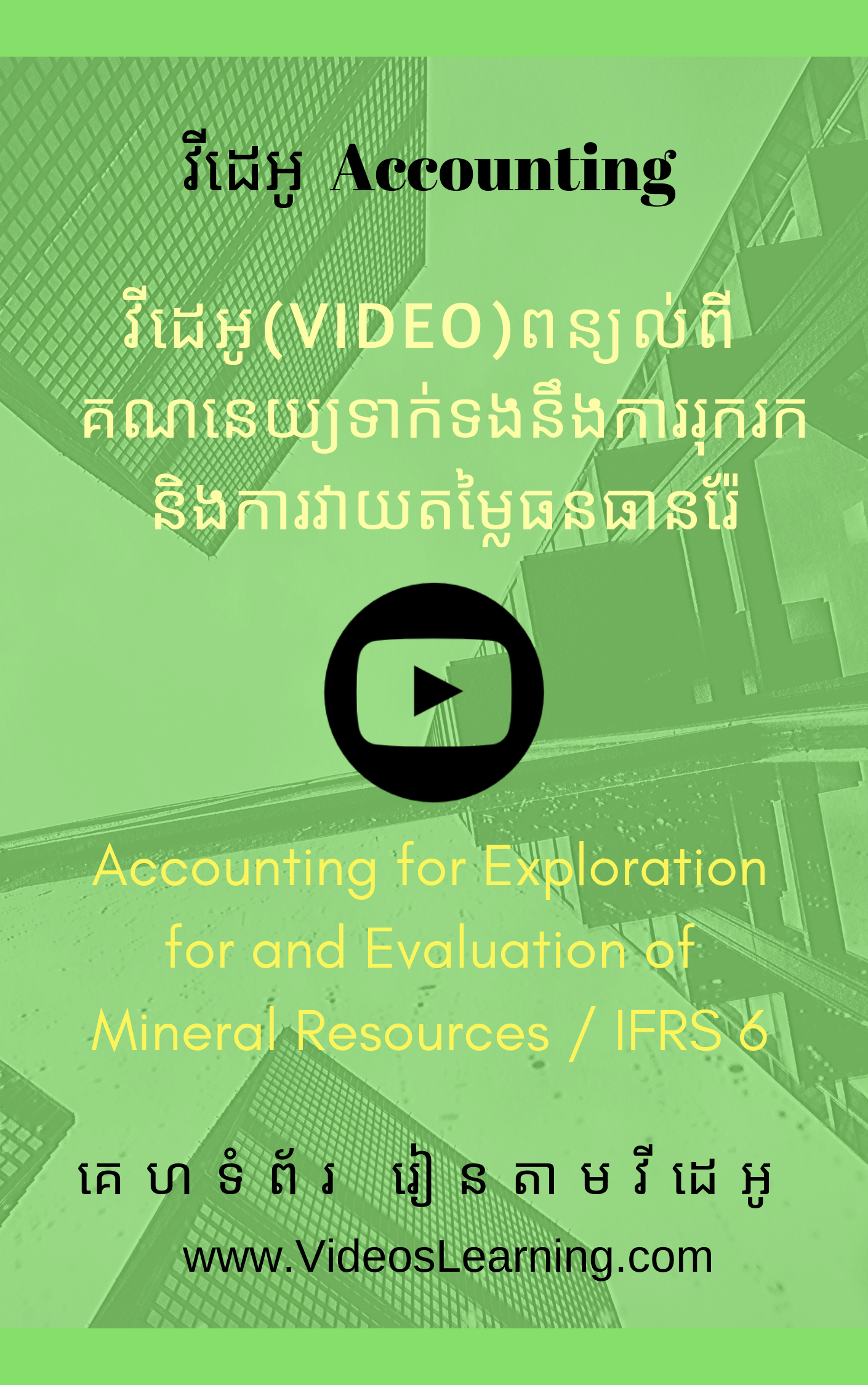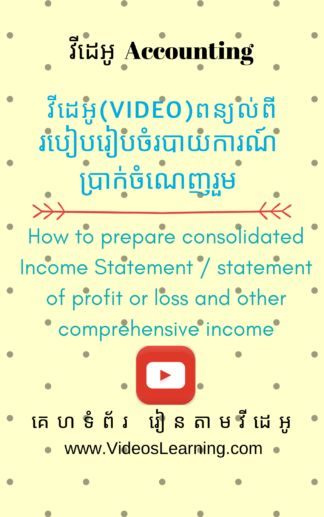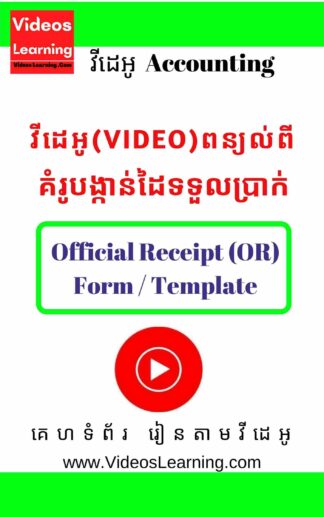Video ពន្យល់ពី ៖ Accounting for Exploration for and Evaluation of Mineral Resources / IFRS 6 (គណនេយ្យទាក់ទងនឹងការរុករក និងការវាយតម្លៃធនធានរ៉ែ )
$9
ចុច ទីនេះ ដើម្បីមើល Videos បង្រៀនបន្ទាប់បង់លុយរួច
គ្រោងនៃ IFRS 6 និយមន័យ ការរុករក និងវាយតម្លៃទ្រព្យសកម្មរ៉ែបង្កប់ន័យការរកមើលទ្រព្យសម្បត្តិរ៉ែ ការរាប់សារធាតុរ៉ែ ប្រេង ឧស្ម័នធម្មតា និងទ្រព្យសម្បត្តិដែលមិនបង្កើតឡើងវិញដែលអាចប្រៀបធៀបបាន បន្ទាប់ពីសារធាតុបានទទួលសិទ្ធិស្របច្បាប់ក្នុងការស៊ើបអង្កេតនៅក្នុងតំបន់ជាក់លាក់មួយ ក៏ដូចជា ការធានានូវលទ្ធភាពឯកទេស និងសមហេតុផលពាណិជ្ជកម្មនៃការដកយកទ្រព្យសម្បត្តិរ៉ែ។ [IFRS 6.ឧបសម្ព័ន្ធ A] ការប្រើប្រាស់ការរុករក និងការវាយតម្លៃគឺត្រូវបានប្រើប្រាស់ពាក់ព័ន្ធនឹងការស៊ើបអង្កេត និងការវាយតម្លៃនៃទ្រព្យសម្បត្តិរ៉ែនាពេលថ្មីៗនេះ លទ្ធភាពដែលសម្រេចបានឯកទេស និងសមហេតុផលពាណិជ្ជកម្មនៃការដកយកទ្រព្យសកម្មរ៉ែគឺអាចបញ្ជាក់បាន។ [IFRS 6.Appendix A] វិធីសាស្រ្តគណនេយ្យសម្រាប់ការស៊ើបអង្កេត និងការវាយតម្លៃ IFRS 6 ផ្តល់សារធាតុមួយដើម្បីបង្កើតការរៀបចំគណនេយ្យសម្រាប់ការទទួលស្គាល់ការស៊ើបអង្កេត និងការវាយតម្លៃប្រើប្រាស់ជាធនធានដោយមិនគិតជាពិសេសពីភាពចាំបាច់នៃវគ្គ 11 និង 12 នៃ IAS 8 វិធីសាស្រ្តរក្សាគណនី ការផ្លាស់ប្តូរនៅក្នុង រង្វាស់គណនេយ្យ និងកំហុស
Outline of IFRS 6 Definitions Exploration for and assessment of mineral assets implies the look for mineral assets, counting minerals, oil, normal gas and comparable non-regenerative assets after the substance has gotten legitimate rights to investigate in a particular zone, as well as the assurance of the specialized possibility and commercial reasonability of extricating the mineral asset. [IFRS 6.Appendix A] Exploration and assessment uses are uses brought about in association with the investigation and assessment of mineral assets some time recently the specialized achievability and commercial reasonability of extricating a mineral asset is certifiable. [IFRS 6.Appendix A] Accounting approaches for investigation and evaluation IFRS 6 grants an substance to create an bookkeeping arrangement for acknowledgment of investigation and assessment uses as resources without particularly considering the necessities of passages 11 and 12 of IAS 8 Bookkeeping Approaches, Changes in Bookkeeping Gauges and Erro



